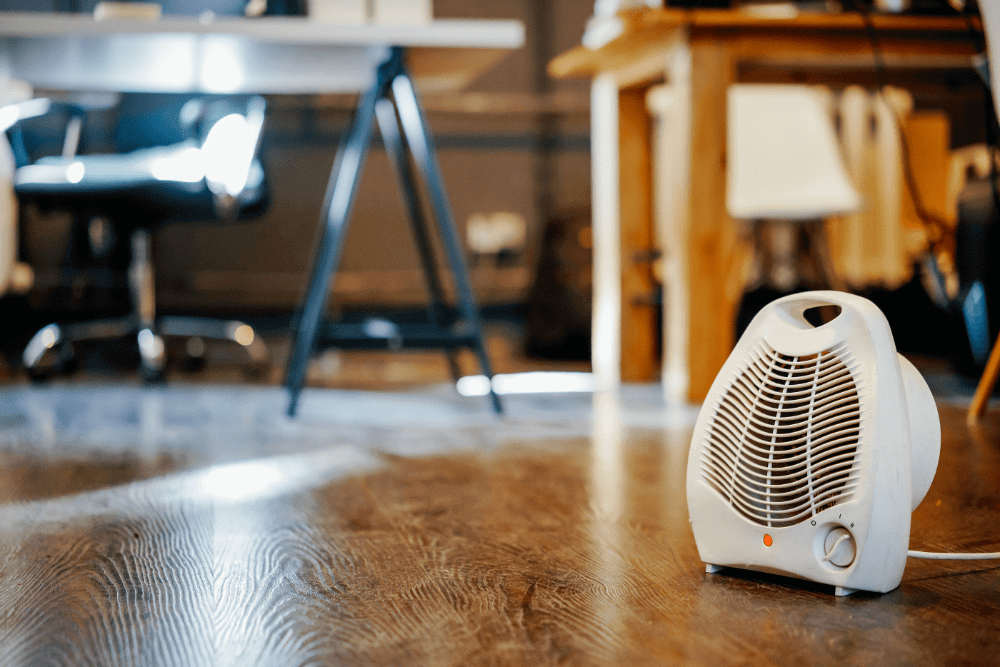1 Source Portable Air Things To Know Before You Get This
Things about 1 Source Portable Air
Table of ContentsThe Basic Principles Of 1 Source Portable Air 1 Source Portable Air Can Be Fun For Anyone9 Simple Techniques For 1 Source Portable AirThe 1 Source Portable Air StatementsThe Only Guide to 1 Source Portable Air
Running costs are based upon an electrical energy rate of 40c/kWh. The costs for 3 months' usage in wintertime are based on 500 hours utilize, or roughly 6 hours per day for 3 months. Maximum warmth result is based upon the optimum wattage of the versions we've examined (we concentrate on higher power level heating systems).:strip_icc()/GettyImages-1390275521-17ac0280256e4687a862ba53775d9cc4.jpg)
On average, tiny fan heating systems are less pricey to buy, but can have higher running costs. Oil column heating systems will be the least expensive on the market to run (on average) however only by a narrow margin ahead of convection heating systems (like panel and micathermic panels).
The Buzz on 1 Source Portable Air
If you have a relatively easy to fix ceiling fan, it'll aid disperse the warmth around the space extra evenly. A number of expensive heating units have actually failed to impress our testers, while some less costly versions make for remarkably good buys.
As the name suggests, they emit warm from a red-hot home heating aspect (so the household will have to take turns sitting in front of it). Radiant heaters are fairly affordable.
Glowing heating units normally set you back in between $20 and $200. Oil-filled column heaters don't really melt oil they make use of power to heat up the oil that's secured inside their columns or 'fins'.
The Basic Principles Of 1 Source Portable Air
Some column heaters aren't also oil-filled however instead make use of various other product or home heating modern technology to function the exact same method - 1 Source Portable Air. The threat of fire with an oil column heater is low contrasted to various other heating unit kinds, however never zero. Oil heaters do not have revealed aspects like radiant heating systems do, and their surface temperature level is less than lots of other heater types (their large surface location makes up for it)
Oil column heating systems won't take off, and while they do not burn their oil to create warm, it's still flammable, so there is a fire threat if the oil leakages, if the heater topple and leakages, or if flammable objects or textile come into call or drop on the heating system. You should work out the same degree of caution with oil heating click site systems as for various other heating unit types, and never hang towels or garments over one to dry them utilize a drying rack rather, a minimum of one metre away.
Column heating systems are especially useful in spaces where they'll be activated for lengthy periods of time or where they'll operate unattended, such as over night in a bed room. The surfaces you're most likely to touch on a column heating unit don't obtain as warm as various other sorts of electrical heaters. You can use a ceiling fan on really reduced rate to aid the column heating system to distribute the warm quicker and more equally.
If there's very little air movement (as an example, if you're sitting reading or seeing television), the warmth may not be distributed uniformly. Oil-filled column heating systems normally cost in between $50 and $450. Convection and panel heating units attract chilly air over an electrical home heating aspect. The warmed up air then leaves the heater and climbs in the direction of the ceiling, while cooler air moves in to change it.
The Buzz on 1 Source Portable Air

Convection and panel heating you can try these out units are more portable than their oil-filled column heating unit equivalents due to the fact that they're significantly lighter. They'll heat up the air in a space uniformly and swiftly. Like a column heating system, you can make use of a ceiling fan on extremely low her comment is here speed to distribute the warm much faster and more evenly. Some models, especially panel heating systems, are fairly costly to get.

1 Source Portable Air Fundamentals Explained
Follower heaters are usually smaller and much more portable than other electric heating units. They additionally come in the kind of tower fan heating systems, which can be much better for dispersing heat around larger areas as a result of their taller profile. They can heat up the air in a room a lot more quickly, evenly and swiftly than a few other heater types.
Fan heating units (ceramic or otherwise) normally expense in between $60 and $900. Ceramic follower heating systems aren't always any type of different in cost to non-ceramic models.